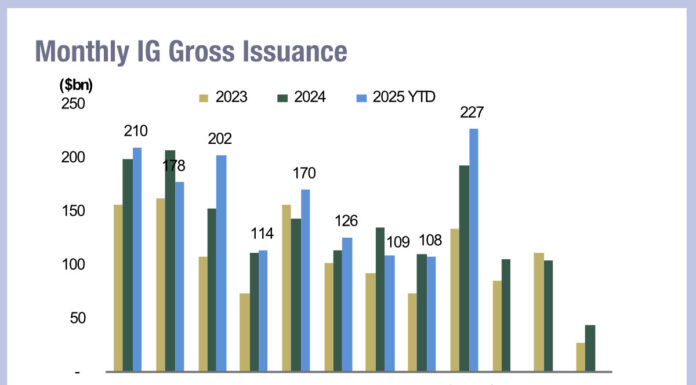European credit trading has historically seen levels of electronic trading of around 50% of total corporate credit trading, while the US market has historically found it hard to break through the 45% mark.
However, recent analysis by Coalition Greenwich has indicated a sudden rise in e-trading within US investment grade markets. This has coincided with increased competition in the space, as several venues innovate to grow their engagement with dealers and buy-side clients.
While European markets are range bound in their level of e-trading credit, US markets have shown that the upper tier of electronic trading has not yet been reached, and that competition can enhance it.
Electronic trading between the US and Europe is often quite different in approach. We hear anecdotally that European buy-side firms are happier to spray the street i.e. asking ten dealers for a price in comp on a trade, which creates significant problems for market makers and therefore limits price improvement on some trades. The US by contrast sees more selective trading, although US investors are more beholden to their broker dealers in order to access decent allocations during the bond issuance process.
Stakeholders in European capital markets need to consider how they are influencing and shaping the framework in order to facilitate greater competition, to further electronification.
Hope for a successful regulatory intervention is misplaced. Europe is poorly served in decision making. Its existence is built on democracy, the best form of fair representation, but a poor model for long-term decision making.
The region has not seen a consistent regulatory framework evolve under the Capital Markets Union (CMU) and last year Christine Lagarde, president of the European Central Bank, noted that the CMU would fail if it were not brought “back on track” particularly by tackling market fragmentation.
That is inherently problematic. A market of 27 sovereign nations is essentially fragmented. European market regulators have struggled to create a competitive single market. Frankly speaking, lobbying efforts from too many stakeholders have destroyed any capacity for Europe to build a workable capital markets model.
The key markets regulation, MiFID II, has had many of its major objectives and processes rolled back. The complexity and specificity of many of its measures, benchmarks and processes may have aimed for perfection, but have instead proven expensive and ineffective.
Consider that the US has successfully run a single post-trade tape for bonds for over 20 years, while Europe and the UK separately have struggled to define what one should look like. They can see one, across the Atlantic, and yet the talking continues.
Let us accept the two decades of evidence that lobbying and politicking will prevent Europe from delivering an effective single market through regulatory means.
Europe cannot wait for its regulators to create a market. Its market operators, banks and investment firms need to step up and bridge the national markets that exist to create a unified market for bond trading.
For credit markets, experience from the US markets suggests that this will be the real driver of increased electronic trading of European corporate bonds – and as a result better execution.
To date, the US market has been the launch pad of credit trading innovation. US investment banks dominate market making in European bonds.
Europe needs greater competition in credit trading, it needs greater differentiation in execution habits, more sophisticated approaches to trading and operational models that overcome the fragmentation at the heart of Europe. That will ultimately help issuers and investors.
©Markets Media Europe 2023
©Markets Media Europe 2025










